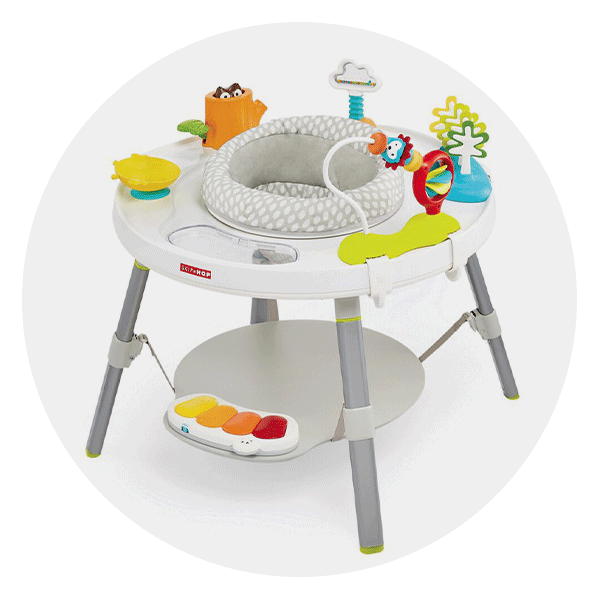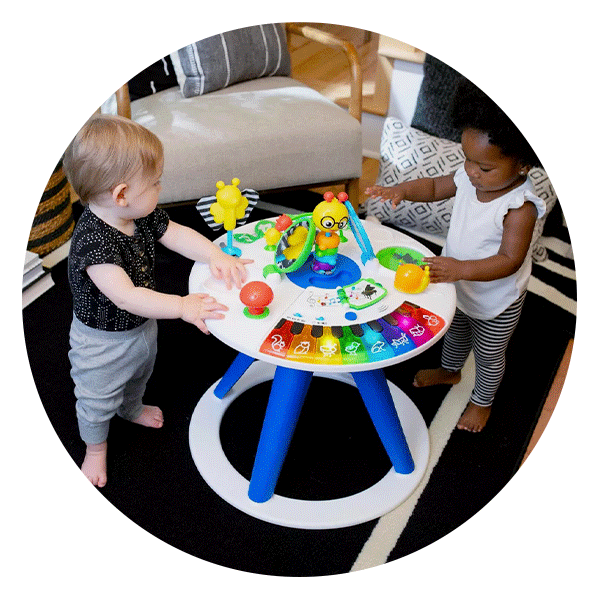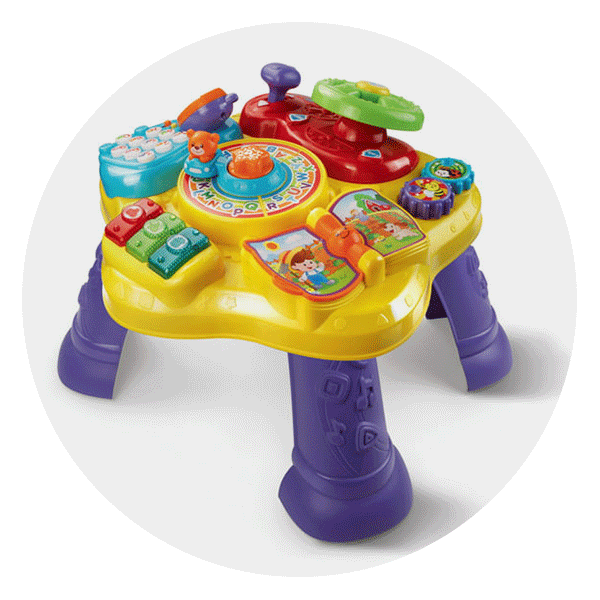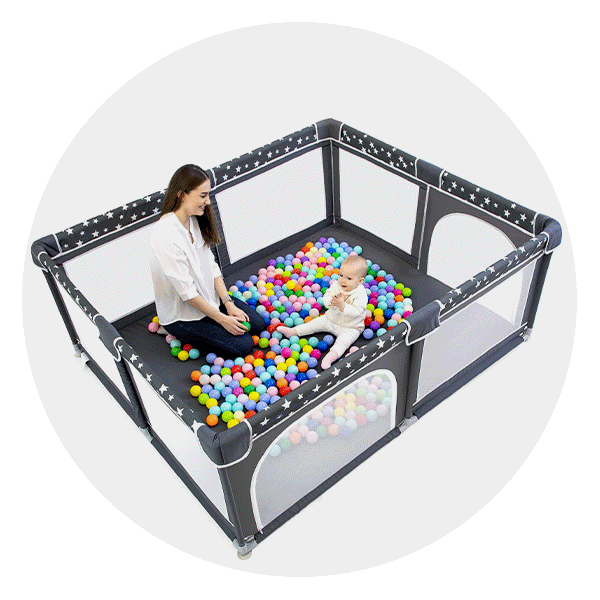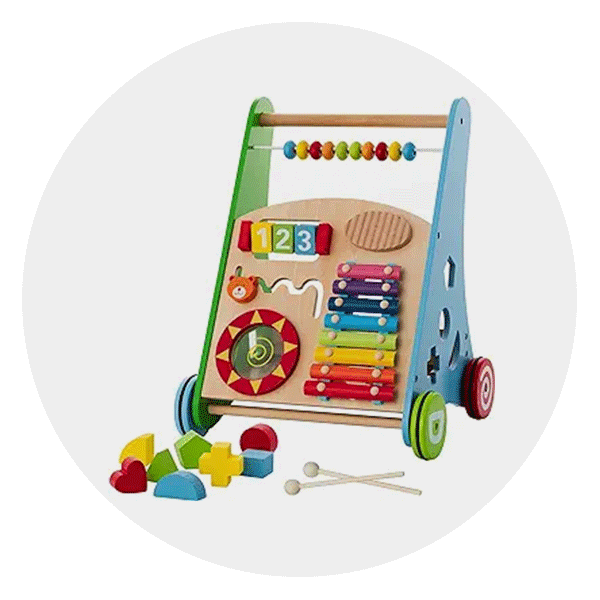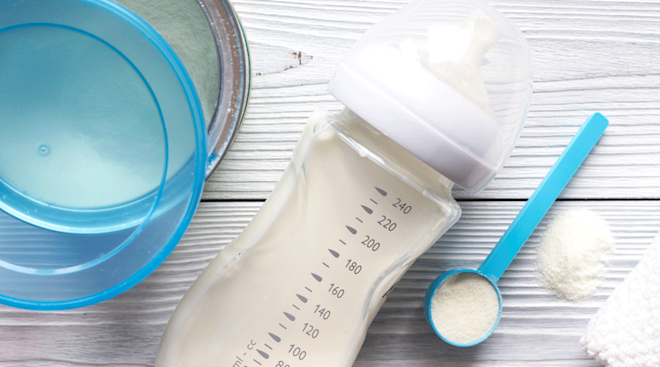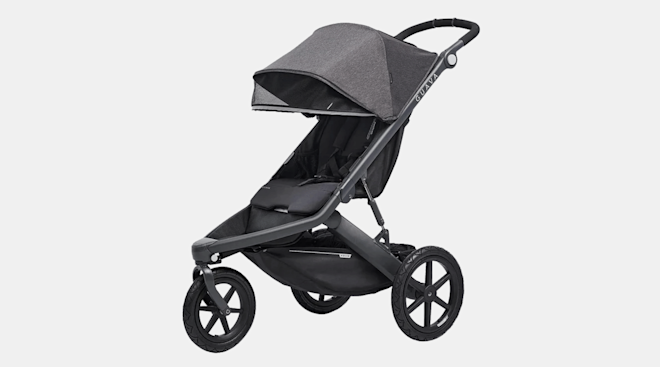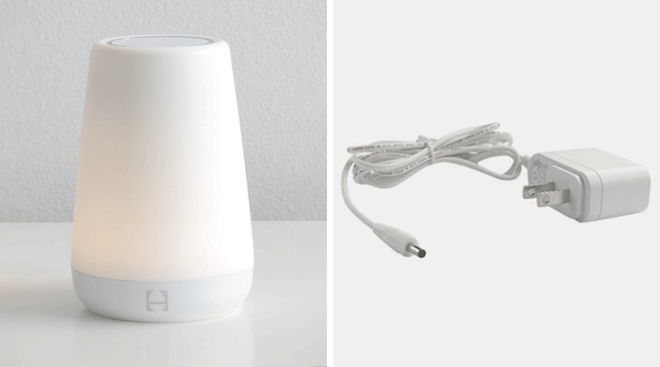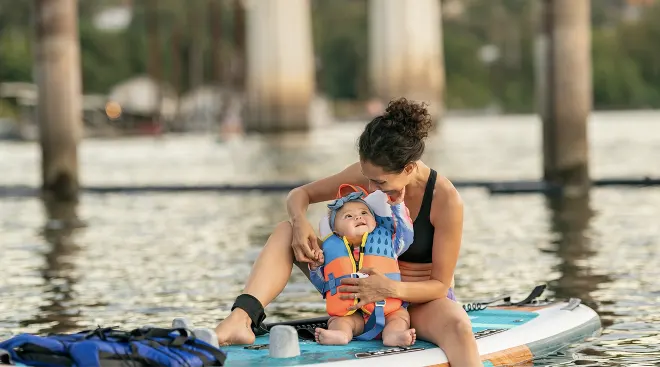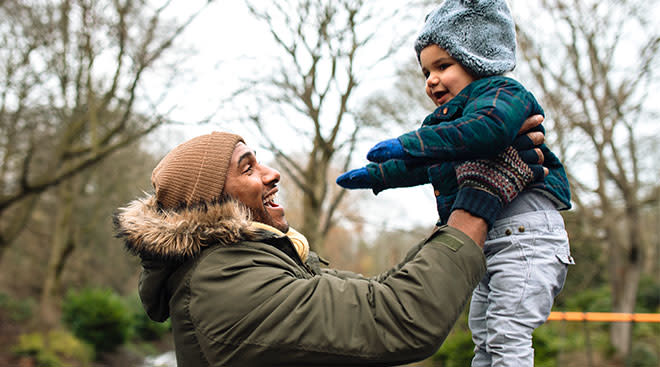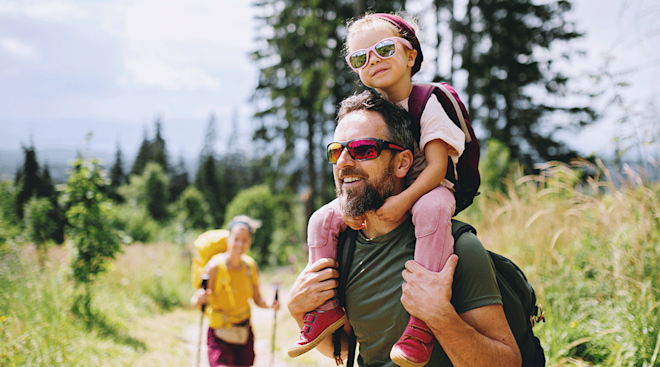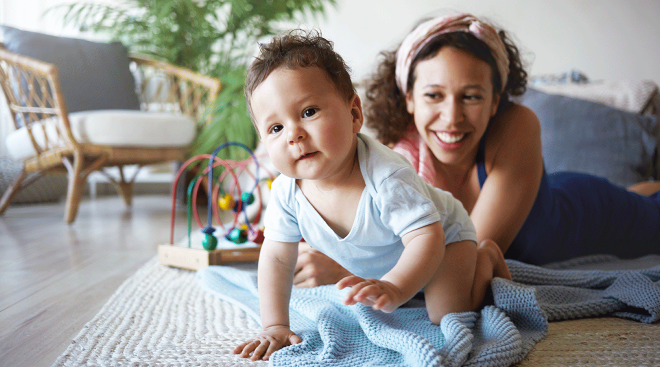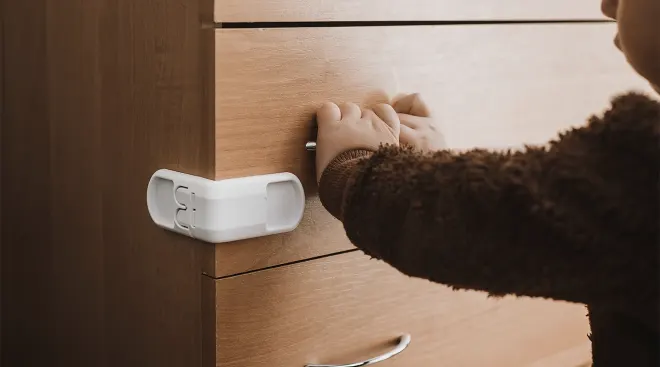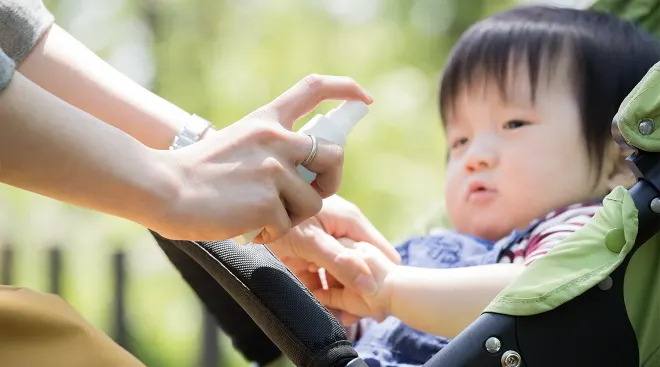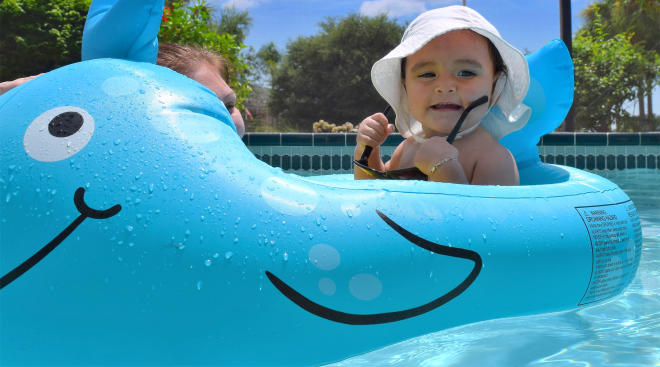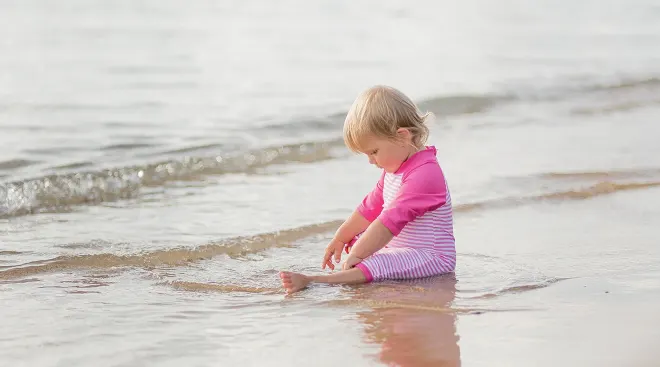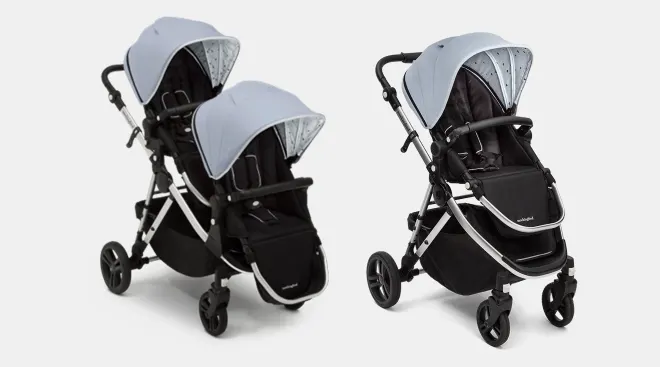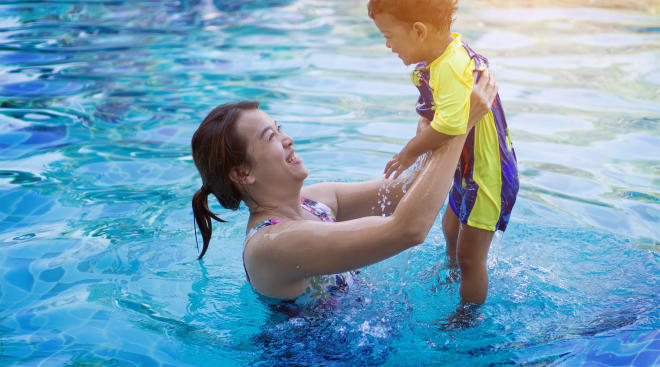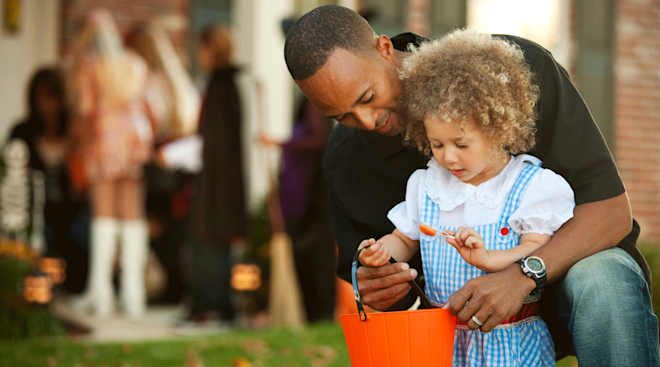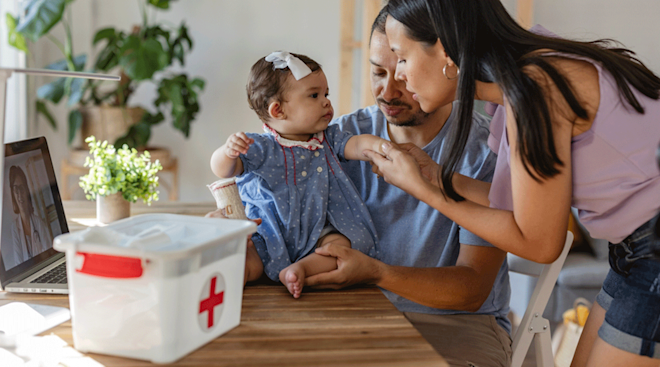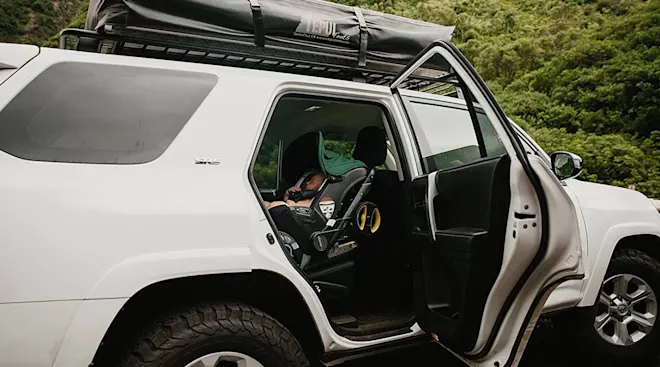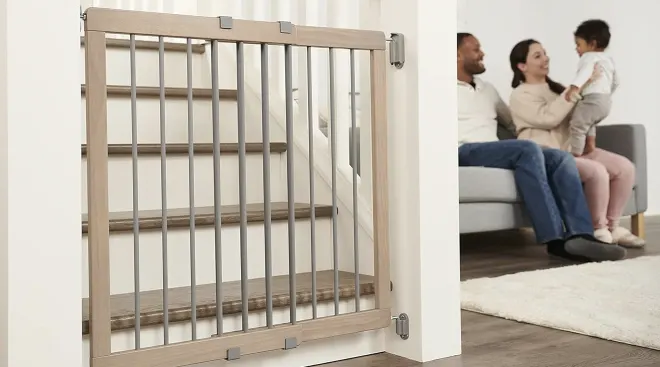Are Baby Walkers Safe? Here’s the Deal
As parents, we want to place our trust in the many baby products available on store shelves and online. But not all gear is created equal, and some so-called “must-haves” are simply unsafe, despite their appeal. One item you may hear mixed reviews about? Baby walkers. They sure do look cute and fun, but numerous accidents and incidents have proven them to be potentially dangerous. So are walkers bad for babies? Read on to learn more about why you shouldn’t use them—plus, find some nifty, safe and adorable alternatives to baby walkers to shop instead.
In short, a wheeled baby walker is a piece of gear that babies who can’t walk yet (generally between the ages of 6 and 15 months) can use to scoot around spaces on their own. Traditional baby walkers feature a seat for babies to sit in, a table and a wide base that has four wheels; baby’s feet touch the ground, and they can use their legs to push off the ground. This is not to be confused with a push-toy baby walker, which is an upright toy that a standing baby can hold onto and push forward.
So are baby walkers safe? By now you probably realize that the short answer is no, they’re not. Baby walkers with wheels pose a risk to a child’s safety and development, says Paul Patterson, MD, a pediatrician in Tacoma, Washington. He adds that baby walkers with seats have been outlawed in Canada, and that the American Academy of Pediatrics (AAP) has called for a ban on them as well.
But exactly why are walkers bad for babies? There are a few specific hazards to be concerned about, says Leah Alexander, MD, a pediatrician in Elizabeth, New Jersey. Below, some of the more common issues associated with baby walkers with wheels:
- Falling down stairs. According to the AAP, more than 230,600 children under 15 months old were treated for baby walker–related injuries, the AAP added, between 1990 and 2014. Of those injuries, a whopping 74 percent involved infants falling down the stairs while in a wheeled baby walker. If there’s any good news, it’s that the number of injuries involving wheeled baby walkers has decreased in recent years as a result of parents becoming better informed about the risks involved.
- Moving too quickly. Unfortunately, walkers for babies can pose a threat even when you’re closely supervising. Once baby gets the hang of how to scoot around, they can pick up speed. “They can quickly get away from a parent or caregiver and into a dangerous situation,” Alexander says. “What’s more, baby can’t get out of a walker if an injury occurs.” Essentially, they’re trapped.
- Reaching for hazardous items. Alexander says she has seen multiple injuries from babies reaching for hazardous items while using a baby walker with wheels. “In one case, an infant reached up and swiped a soup pot handle while passing by a stove,” she says. “The pot’s contents fell on him, resulting in third-degree burns. Another infant ‘walked’ into the cord of a hot iron. It fell on him and caused a large second-degree burn.” There have also been reports of drownings of infants who used a walker near a pool or body of water, she adds.
- Improper leg development. From a developmental perspective, baby walkers place a child in an atypical standing position, inadvertently promoting external rotation and pointed toes, explains Patterson. “This can put unnecessary force on joints, creating an abnormal walking pattern and impacting typical muscle development,” he says.
Don’t worry, we’re not here to take away all of baby’s fun, especially at such an adorable age. Instead of a baby walker on wheels, the AAP recommends opting for an activity center with either a stationary, rotating or bouncy seat.
Sturdy wagons or push walking toys are also acceptable, but you’ll need to closely supervise when your child is using this item, as the wheels can increase the risk of injury. Make sure your toy of choice has a bar for baby to hold on to, and check that it’s weighted and won’t tip over while in use.
Ready to help baby explore, play and move around in a safe way? We’ve rounded up developmentally appropriate alternatives to baby walkers for littles who are just beginning to use their legs and feet.
Convertible play table
- Discovery window encourages cause and effect learning
- Machine-washable polyester seat
- Clean, minimalistic aesthetic
- 3AAA batteries not included
- Expensive
This fun activity center allows babies to swivel and bounce once they’re ready to use their little feet to explore. It supports proper leg alignment at a variety of ages and stages, and a removable bounce plate lets babes bounce before their tiny tootsies even reach the floor. As your little one grows, removable and repositionable toys give way to a simple tabletop space perfect for playing, coloring or snacking.
Dimensions: 31" (L) x 31" (W) x 18.5" (H) | Weight: 15 lbs. | Weight capacity: 25 lbs.
Ocean baby jumper
- Fosters fine motor skills
- Seat cover is machine-washable
- Turtle is removable (and portable)
- Coral holes can sports additional hanging rings/toys
- Clunky to tote around
- Teething babies can’t reach some of the toys to mouth
Satisfy baby’s need to move and bounce with this brightly colored bouncer from Baby Einstein. Have them sit in the 360-degree swiveling chair and twist and turn to meet a whole host of fun underwater friends, from a striped white and yellow fish and mask-wearing sea turtle to a seafaring octopus and smiling starfish. Each plaything provides auditory and tactile stimulation for your curious little one, and since the seat is suspended from the top of the toy, they can bounce till their heart’s content.
Dimensions: 36.7" (L) x 36.7" (W) x 34" (H) | Weight: 12.2 lbs. | Weight capacity: 25 lbs.
Stationary walker alternative
- Four modes to grow with baby
- Teaches colors and animals in three languages
- Interactive and tactile toys enhance fine motor skills
- 3AA batteries not included
- Seat cover is spot clean only
- Pieces don’t stay snapped in, some parents say
Here’s a unique spin on a baby walker with wheels: This toy combines a wheeled walker with an interactive and enriching activity table. A seat on one end of the toy sits on wheels, which allows baby to safely circle around the activity table without the whole contraption moving around the room.
Dimensions: 35.5" (L) x 23.3" (W) x 22.9" (H) | Weight: 11.8 lbs. | Weight capacity: 26 lbs.
Light-up learning table
- Comes in yellow or pink
- Affordable
- 2AA batteries included
- Multilingual songs and phrases
- May be too short for taller infants + toddlers
- Volume is very loud, some parents say
- Can topple if baby leans too hard
When baby is preparing for those first tentative steps, a learning table offers a great way to encourage movement. This bright and colorful VTech table is loaded with interactive toys that light up and sing. As baby begins to take steps, they’ll love cruising from one side of the table to another, grabbing the steering wheel, pressing buttons, flipping book “pages” and twisting the gear-looking knobs—with all the sights and sounds that come along with it.
Dimensions: 14.9" (L) x 19.8" (W) x 16.8" (H) | Weight: 4.1 lbs. | Weight capacity: N/A
Roomy playard
- Parents can join in on the fun
- Ventilating mesh walls
- Includes a compact carrying bag
- Discontinue use once baby can climb out/attempts
- Three plush toys included
- Also available in a slightly smaller size
If it’s freedom that baby craves, try giving them more space and less restriction with the help of an extra-large playpen. This oversize option affords baby the liberty to scoot and crawl and attempt those first steps without risk—and parents can find peace of mind without feeling like we’re confining our tiny adventurers.
Dimensions: 79" (L) x 63" (W) x 27" (H) | Weight: 20.4 lbs. | Weight capacity: 150 lbs.
Wooden push toy
- Rubber edges on wheels protect delicate floors
- Features beads, a shape-sorter, xylophone and pound drum
- Basket in back holds baby’s favorite toys
- Affordable
- Included screws can strip easily
- Bead bar can dislodge, some parents say
Sturdy push toys are an alternative to traditional baby walkers with wheels. Just make sure your pick has a bar for baby to hold on to, and check that the toy won’t tip while in use. Younger babies can use this toy to play, while early walkers will benefit from the support the toy offers as they push it and practice their steps. Keep in mind that caution and supervision is always necessary when baby uses a toy with wheels.
Dimensions: 13.3" (L) x 3.7" (W) x 17.9" (H) | Weight: 6.8 lbs. | Weight capacity: N/A
Shopping for baby walker alternatives can be challenging for parents, because there are so many options to choose from. Moreover, the AAP has called for an outright ban on infant walkers with wheels; making confident purchases with high-stakes safety considerations can be intimidating.
Our goal is to do the bulk of the research, so you don’t have to spend hours searching online for the most reliable and skill-building products. To help you find the right baby walker alternative, we:
- Consulted with two pediatricians to understand the safety risks posed by baby walkers.
- Adhered to the most up-to-date recommendations from the AAP.
- Read user reviews to find out how the baby walker alternatives worked for real-life families, and didn’t consider anything with less than an average four-star rating.
Editorial integrity is at the heart of everything we publish. Read about how The Bump develops and reviews all articles, including product reviews.
About the writer:
Christin Perry is a freelance writer and editor who specializes in pregnancy, parenting and health and wellness topics. As a mother of four (ages 5, 10, 12 and 14), she’s gone through the paces and has used what seems like every product under the sun—and she’s used that experience to write dozens of product roundups for The Bump. Christin considers herself lucky to have worked for a long list of other large clients, including Forbes Advisor, Verywell Family, Parents, Parade, The Knot, Apartment Therapy and Dwell, to name a few.
Please note: The Bump and the materials and information it contains are not intended to, and do not constitute, medical or other health advice or diagnosis and should not be used as such. You should always consult with a qualified physician or health professional about your specific circumstances.
Plus, more from The Bump:
Paul Patterson, MD, PhD, FAAP is a pediatrician in the Seattle area. He received his medical degree from Uniformed Services University of the Health Sciences in Bethesda, Maryland.
Leah Alexander, MD, FAAP is a pediatrician with Pediatricare Associates of New Jersey, and a consultant for Mom Loves Best. She received her medical degree from Michigan State University College of Human Medicine.
Healthy Children (AAP), Baby Walkers: A Dangerous Choice, August 2022
Pediatrics, Infant Walker–Related Injuries in the United States, October 2018
Global Pediatric Health, Are Baby Walker Warnings Coming Too Late?: Recommendations and Rationale for Anticipatory Guidance at Earlier Well-Child Visits, September 2019
Navigate forward to interact with the calendar and select a date. Press the question mark key to get the keyboard shortcuts for changing dates.

































